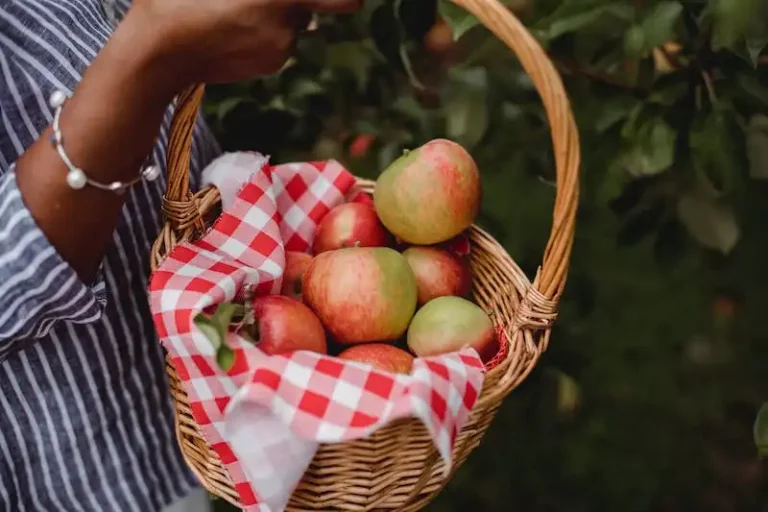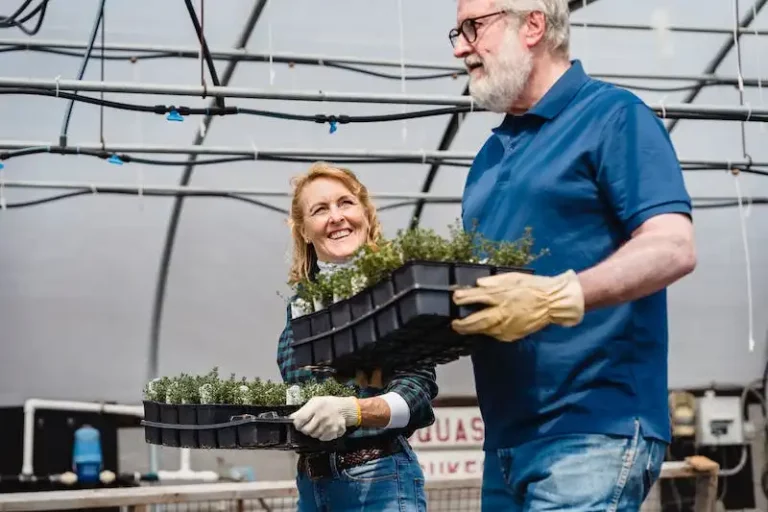Rhubarb is a popular plant that is often grown in home gardens. It is commonly placed in the garden alongside other crops, such as strawberries or tomatoes, as it provides various benefits. A common combination is the strawberry-rhubarb duo, which is not only visually appealing but also helps to support the growth of both plants. Rhubarb plants should be planted in a location with full sun or partial shade, and the soil should be rich and well-drained.
When growing rhubarb, it is important to know that it is a perennial plant, meaning that it should begin to grow each spring if it is well-maintained. As a gardener, you should be prepared to harvest rhubarb stalks each year from mature plants. The specific time to harvest rhubarb will depend on your climate, but it is generally recommended to start harvesting once the stalks are thick and tall.
Rhubarb plants are known for their hardiness and can withstand colder climates. However, in areas with harsh winters, it is recommended to take some measures to ensure the viability of the plant. One common practice is to cover the rhubarb plants with a layer of straw or mulch once the ground has frozen. This will help insulate the plants and protect them from extreme cold temperatures. In addition to cold temperatures, rhubarb plants can also be susceptible to common pests and diseases. Some common pests include aphids, slugs, and snails, while diseases such as root rot and crown rot can also affect rhubarb plants. It is important to monitor your plants regularly and take necessary measures to prevent or treat these issues.
When it comes to harvesting rhubarb, gardeners should be mindful of the proper techniques. Rhubarb stalks should be harvested by grasping them at the base and pulling firmly to detach them from the plant. It is important to avoid cutting the stalks, as this can lead to rotting and diseases. The harvested stalks can be used for various culinary purposes, such as pies and jams. Rhubarb is known for its tart flavor, and it pairs well with sweet fruits like strawberries or apples.
In conclusion, growing rhubarb can be a rewarding experience for gardeners. With proper care, rhubarb plants can provide a bountiful harvest year after year. Whether you plan to use the stalks in your own recipes or sell them commercially, rhubarb is a versatile and delicious addition to any garden.
How to Grow and Care for Rhubarb
Rhubarb is a plant that can be grown and harvested in your own backyard. It is a popular addition to many home gardeners’ vegetable patches because of its versatility and delicious taste. Rhubarb is a perennial plant that can live for many years, making it a great investment for your garden.
When growing rhubarb, it is important to choose a location that provides plenty of sunlight. Rhubarb prefers well-drained soil with a pH level that is slightly acidic to neutral. If your soil is not ideal, you can amend it with organic matter to improve its fertility.
Rhubarb can be grown from either seeds or crowns. Planting from crowns is the more common method, as it allows you to start harvesting rhubarb sooner. Crowns are the divided root mass of a mature rhubarb plant. They can be purchased from a garden center or obtained from a gardener who is willing to share.
To plant rhubarb crowns, dig a hole that is large enough to accommodate the roots. Place the crown in the hole, ensuring that the top of the crown is level with or slightly above the soil surface. Backfill the hole with soil and tamp it down gently to remove any air pockets. Water the newly planted crown thoroughly.
When caring for rhubarb, it is important to keep the soil evenly moist. Water the plant regularly, especially during dry periods, but be careful not to overwater. Rhubarb also benefits from a layer of mulch around the base of the plant to help conserve moisture and suppress weeds.
Rhubarb plants should be fertilized in early spring with a balanced fertilizer. This will help promote healthy growth and a bountiful harvest. Additionally, you can divide mature rhubarb plants every 5-10 years to control their size and rejuvenate them. Dividing rhubarb is usually done in early spring or late fall when the plant is dormant.
It is important to harvest rhubarb properly to ensure a longer productive life for the plant. The first rule of harvesting rhubarb is to wait until the plant is at least two years old before harvesting any stalks. This allows the plant to establish strong roots and grow larger crowns. When harvesting, pull the stalks away from the base of the plant rather than cutting them. Always leave a few stalks behind to allow the plant to continue growing.
Rhubarb has a wide range of culinary uses and can be used in a variety of dishes such as pies, sauces, and jams. Its tart flavor pairs well with sweet fruits like strawberries, making it a popular ingredient in many dessert recipes. Rhubarb can also be frozen or canned for use throughout the year.
In conclusion, growing and caring for rhubarb is a rewarding experience. By following the tips and advice in this guide, you can enjoy a bountiful harvest of this versatile plant right in your own backyard.
References:
- University of Maine Cooperative Extension: Rhubarb
- Horticulture Services: Insect Control for Home Gardens
- Royal Horticultural Society: Rhubarb
How to Plant Rhubarb
Rhubarb, also known as rheum rhabarbarum, is a vibrant and hardy vegetable commonly grown for its edible stalks. It is a perennial plant that belongs to the family Polygonaceae. The stalks are often used in pies, jams, and other recipes. If you’re a gardener looking to grow your own rhubarb, here are some steps to get you started:
- Choose the right variety: There are several varieties of rhubarb, but two of the most commonly grown are ‘Victoria’ and ‘Glaskins Perpetual’. The ‘Victoria’ variety produces red stalks, while ‘Glaskins Perpetual’ has green stalks with a slight red tinge. Choose a variety that suits your taste and preferences.
- Find a suitable location: Rhubarb prefers a sunny spot in your garden, although it can tolerate some shade. The soil should be well-draining, fertile, and slightly acidic with a pH between 5.0 and 6.5. Avoid planting rhubarb in areas prone to frost or with heavy clay soil.
- Prepare the soil: Before planting, work the soil to make it loose and workable. Remove any weeds or rocks that may hinder rhubarb root growth. Incorporate organic matter, like compost or well-rotted manure, into the soil to improve its fertility and moisture retention.
- Planting: Rhubarb can be planted as seeds, but it is more commonly planted as root divisions or crowns. Dig a hole deep and wide enough to accommodate the roots of the rhubarb plant. Space the plants about 3 to 4 feet apart. Plant the crowns with the buds pointing up and the roots spread out in the hole.
- Watering: Rhubarb prefers consistently moist soil, but it should never be waterlogged. Water the plants regularly, especially during dry spells, to keep the soil evenly moist. Avoid overwatering as it can lead to root rot.
- Fertilizing: Apply a balanced fertilizer, like a 10-10-10 NPK fertilizer, during the growing season to promote vigorous growth. Follow the manufacturer’s instructions for application rates.
- Mulching: Mulch around the base of the plants with organic matter, like pine straw or compost, to help conserve moisture, suppress weed growth, and maintain a consistent soil temperature.
- Harvesting: Rhubarb should not be harvested in the first year after planting to allow the plant to establish and grow. In the second year, you can start harvesting stalks in late spring or early summer. To harvest, simply grasp the stalk close to the base and gently pull it away from the plant. Only harvest about a third of the stalks at a time to ensure the plant can continue to grow and produce more.
- Winter care: In colder regions, protect your rhubarb plants from winter frost by covering them with straw or a layer of mulch. Remove the mulch or straw in early spring when the soil thaws and new growth begins.
- Additional tips: Rhubarb stalks can be forced by covering the dormant plant with a pot or bucket to block out light. This will increase the sweetness of the stalks. However, this practice should only be done with mature plants, not young ones. Also, make sure to keep pets away from rhubarb plants, as the leaves are toxic if ingested.
By following these steps, you can successfully plant and grow your own rhubarb in your garden. Enjoy the delicious harvest and experiment with different rhubarb recipes!
When to Plant
Knowing when to plant rhubarbs is essential for a successful growth. Rhubarb plants are typically planted in the early spring or late fall when the soil can be worked and the temperatures are above freezing. However, the optimal time to plant rhubarb depends on the specific variety and the local climate.
In most areas, it is recommended to plant rhubarb in early spring, as soon as the ground can be worked. This allows the plants to establish their roots before the hotter summer temperatures arrive. In colder areas where the ground freezes in winter, it is best to plant rhubarb in the late fall, at least six weeks before the first hard frost. This provides enough time for the plants to establish their root system before winter sets in.
Rhubarb plants are hardy and can tolerate drought conditions, but regular watering is important for optimal growth. Water the plants thoroughly during dry periods, keeping the soil evenly moist. However, avoid overwatering, as it can lead to root rot and other problems.
| Planting Advice | Harvesting Advice |
|---|---|
|
|
Another important factor to consider when planting rhubarb is the spacing. Rhubarb plants should be spaced at least 3 to 4 feet apart to allow for proper growth and airflow. This also prevents diseases and pests that can thrive in crowded conditions.
After the harvest season is over, it is important to provide some care to the rhubarb plants to ensure their overwintering. Cut back the stalks to ground level and cover the crowns with a layer of mulch or straw to protect them from extreme temperatures. If the average temperature in your area drops below freezing, it may be necessary to move potted rhubarb plants to a protected area.
In conclusion, understanding when to plant rhubarb is crucial for a successful growth and abundant harvests. By following the recommended planting advice and harvesting techniques, you can enjoy the tangy and tart flavor of this excellent vegetable. Plus, rhubarb is a hero when it comes to pairing with strawberries for delicious pies, cakes, and other desserts!



